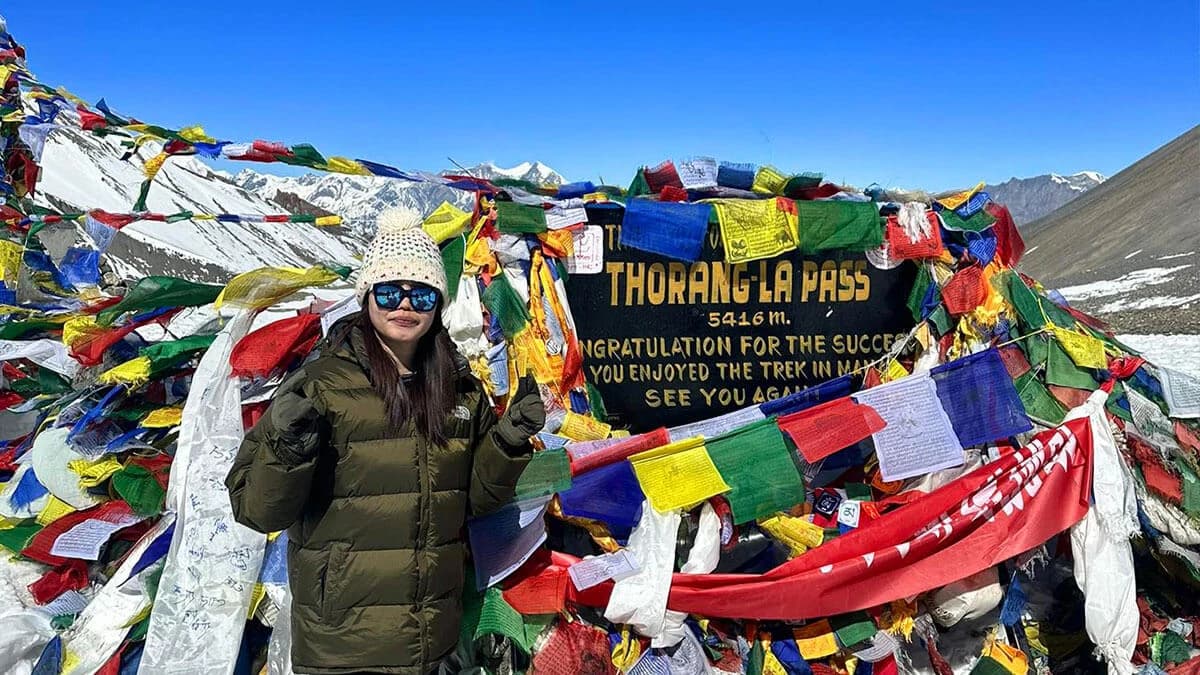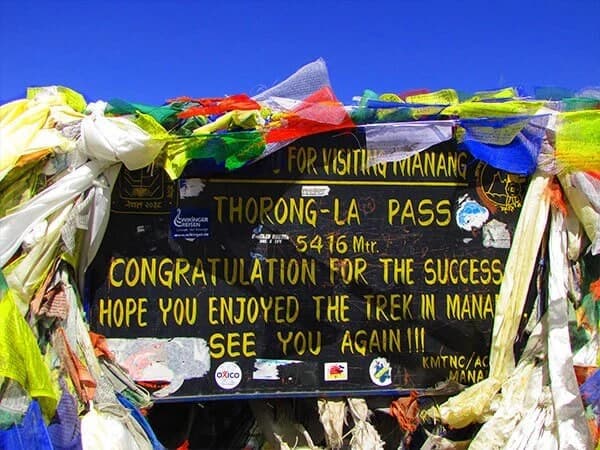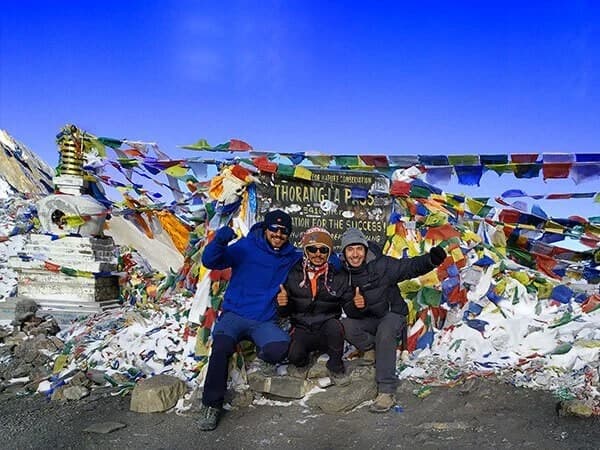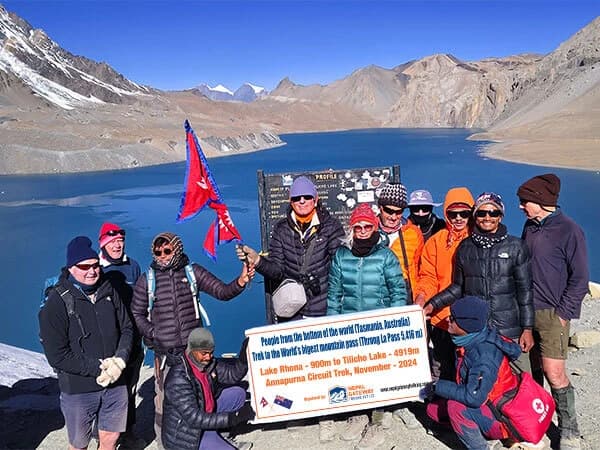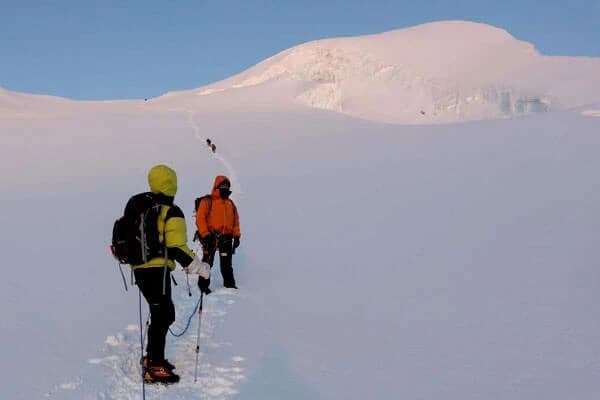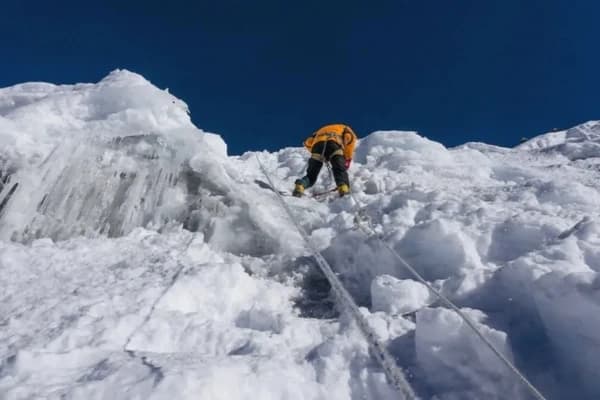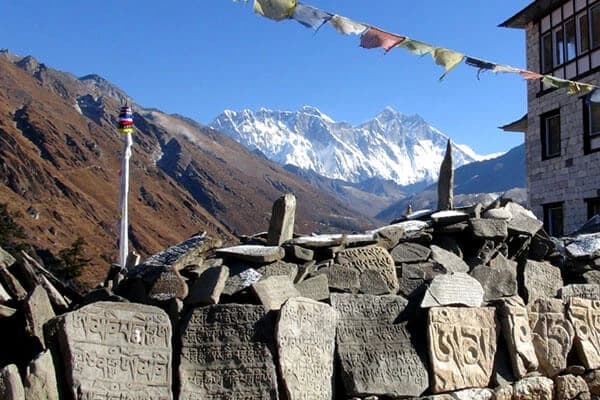Before lacing up your boots and hitting the trail, you must make a crucial decision: when is the best time to trek to the Annapurna Circuit?
Best Time for Annapurna Circuit Trek
Introduction of Annapurna Circuit Trek in Nepal
Annapurna Circuit Trek in Nepal is one of the world's most famous and beautiful treks. The trek attracts thousands of trekkers every year. This trek offers a wide variety of scenery, including alpine meadows and subtropical forests. The incredible picturesque of the towering Himalayan giants, the dramatic valleys and the quaint villages are remarkable.
One of the most well-liked treks in the Himalayas is the Annapurna Circuit. It provides breathtaking views of some of the highest mountains on Earth, namely Annapurna I (8,091 m), Dhaulagiri (8,167 m), and Manaslu (8,167 m). The view of Machhapuchhre (Fishtail) along the Annapurna ranges is phenomenal.
Highlights of the Annapurna Circuit Trekking
- Climb the 5416-meter Thorong La Pass, the highest point of the trek, with breathtaking views of the surrounding landscape.
- Witness the majesty of the Annapurna mountain range, which includes Annapurna I, the tenth-highest peak in the world.
- Explore a variety of landscapes, from lush valleys and forests to high-altitude glaciers and deserts.
- Hike to Poon Hill for a breathtaking sunrise over the Himalayas.
- Learn about the rich culture of the Gurung people in villages like Ghorepani and Ghandruk.
- Unwind in Tatopani's natural hot springs.

The Best season for Trek to Annapurna Circuit
There are four main seasons in Nepal to consider for the Trek to Annapurna Circuit: spring (March- May), summer (June- August), autumn (September- November), and winter (December- February).
Spring and autumn are the best seasons to visit Nepal for an Annapurna Circuit Trek. Each season has advantages and disadvantages when trekking in Nepal. Let's get the advantages and disadvantages of the season below;
Annapurna Circuit Trek in Spring (March-May)
Trekking the Annapurna Circuit in the spring is a terrific idea. The weather is sunny and warm. You have more time to hike every day because the days are longer. The day temperature will be a maximum of 2 5°C, and the minimum temperature will be - 5°C at night. The scenery is even more stunning as wildflowers are in bloom.
It is possible to experience rain early in the season, so make sure you bring rain gear.
Highlights of trekking the Annapurna Circuit in the Spring Season
- Mild and comfortable temperatures. Walking is more comfortable on warmer days, especially when the altitude is higher.
- Gorgeous rhododendrons and wildflowers. • Stunning views of the Himalayas; • A vibrant and picturesque landscape created by the rhododendron forests in full bloom.
- Although spring is more popular than autumn, it is slightly less congested and offers a more laid-back atmosphere.
If you're considering trekking to the Annapurna Circuit in the spring, keep the following in mind.
- Views of the mountains may become obscured by dust and haze towards the end of the season.
- Pre-monsoon showers may cause trails to become dangerous and difficult.
Annapurna Circuit Trekking in Summer/Monsoon (June-August)
In reality, Nepal's summertime (June to August) is the monsoon season. This indicates a high likelihood of rain, which will make the trails slick and muddy. Avalanches and landslides are also more likely. In addition, the rain can make it challenging to see the views.
These factors make trekking the Annapurna Circuit during the monsoon season unpopular. Summertime trekking does have some benefits, though, like wildflowers and fewer crowds. If you must go trekking in the summer, early June or late August are the best times to go because there is less rain during these months.
Highlights of trekking the Annapurna Circuit in the monsoon season
- The landscape is revitalized by the rain, displaying lush forests and numerous waterfalls.
- There is a lot of solitude because very few hikers go out during the monsoon.
- Prices for lodging and services may be less during the off-season.
If you're considering hiking the Annapurna Circuit in the summer, keep the following in mind.
- Some sections of the trail may be hazardous due to mud and avalanches, as well as an increased risk of landslides.
- The rain will make it difficult to see the views. Mountain views are often obscured by clouds and mist.
- Leeches and other insects emerge due to the wet weather, which can be annoying.
Trek to Annapurna Circuit in Autumn (September-November)
Autumn is the best time to go trekking in Nepal. Average temperatures range from 15°C in the lower regions to -10°C at higher altitudes. The weather is sunny and stable. The Annapurna mountain range is spectacularly visible due to the clear skies. Rainfall is also less likely than in the spring.
Autumn is the peak tourist season. So you can expect crowded trails, teahouses, lodges, and restaurants. You must reserve your lodging and meals well in advance in October and November. If you plan to trek during the Dashain and Tihar festivals, it is more crowded because Nepalese are on the trek too.
Autumn trekking in the Annapurna Circuit offers the following highlights
- Clear skies and mostly sunny days with mild temperatures.
- Stunning views of the Annapurna mountain range.
- Less likelihood of rain, though there may be sporadic showers in early September.
- Mild to warm daytime temperatures in the lower regions.
- The landscape is verdant and lush, with pure rivers and flowers in bloom.
Trekking to Annapurna Circuit in Winter (December-February)
With average temperatures ranging from -10°C (14°F) in the lower regions to -20°C (-4°F) at higher altitudes, winter is the coldest season to trek the Annapurna Circuit. Trekking can be challenging in the snow, and certain trails might be closed. It can get quite chilly at times, particularly in February.
Winter is the least popular season to hike the Annapurna Circuit, though. Because of the cold weather and the possibility of significant snowfall, especially at higher altitudes, winter trekking on the Annapurna Circuit is less common. Winter, on the other hand, offers a special and tranquil experience for those who can withstand the cold. If you're up for the challenge, you can be rewarded with breathtaking views of the Himalayas covered in snow. It is also the cheapest time to trek because it is the off-season.
The following are some of the best things to see when trekking the Annapurna Circuit in the winter.
- The winter air is clear and crisp, providing excellent visibility and breathtaking views of the mountains.
- The trails are much less crowded, making for a more tranquil and contemplative trekking experience.
- More daring and seasoned trekkers may find the challenge of winter trekking appealing.
If you're considering hiking the Annapurna Circuit in the winter, keep the following in mind.
- There will be severe weather, including snow and chilly temperatures. It can be hard to withstand extreme cold, especially at night and at higher elevations.
- Excessive snowfall may obstruct some trails and passes.
- Hiking essentials such as boots, crampons, and warm clothing are required.
- During this period, trekking will be the least expensive and least crowded.
- During the winter, fewer teahouses and lodges may open, which would reduce the number of places to stay and eat.
Making the Choice: A Month-by-Month Breakdown
- February: Unpredictable weather lingers from the winter monsoon. Consider alternative treks in Nepal.
- March: Early spring brings pleasant temperatures and some rhododendron blooms.
- April: Prime time for witnessing the rhododendron spectacle. Expect some crowds.
- May: Pleasant weather continues, but lower valleys can be hazy.
- June to August: Monsoon season. It is not recommended for the Annapurna Circuit trek.
- September: Early autumn offers a good balance between clear skies and manageable crowds.
- October: Peak season. Expect stunning views and vibrant culture, but also crowded trails and potentially higher costs.
- November: Shoulder season offers a chance to escape peak crowds while still enjoying clear skies.
- December to January: Winter arrives. Be prepared for extreme cold and potential pass closures.
Things to Consider When Choosing the Best Time to Trek to Annapurna Circuit Trail
There's no single "best" time for everyone on the Annapurna Circuit. The ideal season depends on your priorities and preferences. Here are some factors to weigh in on your decision:
Experience Level
- Beginner: With their predictable weather, spring and autumn provide the most comfortable conditions.
- Intermediate: While spring and fall are excellent options, you may think about going during the shoulder seasons. There may be fewer tourists in early spring or late fall. Summer hiking may be an option for seasoned hikers who don't mind difficult weather.
- Advanced: With its extremely low temperatures and possible snow blockage, winter offers a special set of difficulties.
Weather Preferences
- Warm Weather: While autumn brings mild days and cooler nights, spring and early summer offer pleasant temperatures.
- Cool Weather: he best views of the mountains and the clearest skies will be in the fall and winter. But winter also means bitter cold and the possibility of snowfall.
The precipitation
- Rainfall: During the monsoon season (June to August), heavy rainfall can cause trails to become hazardously slick. Rain can also obstruct views of the mountains.
- Snow: Heavy snowfall during the winter trekking season (December to February). It can block certain passes and raise the risk of avalanches.
- It is best to avoid the summer monsoon season. Early Spring might have occasional showers, but Autumn offers the driest conditions.
Trail Conditions
Terrain
- Trail Difficulty: Consider your degree of physical fitness and trekking experience. The Annapurna Circuit has some difficult sections with very steep ascents and descents.
- Trail Maintenance: During the busiest times of year (fall and spring), trails are in good condition. Trekking during the off-season may reveal poorly maintained or less-used paths.
Accessibility
- Transportation: Take into account how simple it is to get to and from the trailhead and the destination. Snowfall in the winter and landslides in the monsoon season can both have an impact on roads.
- Trail Closures: In winter and monsoon, the trail may close due to inclement weather or maintenance needs.
Solo vs Guided Treks
- Porters and Guides: Using a guide can improve your trip by providing safety and local expertise. Because porters can lift large loads, the hike requires less physical exertion.
- Solo Trekking: If you prefer to go on your own, it is more risky. Before embark make sure you have the necessary navigational equipment and are self-sufficient.
Crowds
- More Crowds: Autumn (peak season) sees the highest number of trekkers, with Spring also seeing a higher volume.
- Fewer Crowds: Winter provides the least crowded experience, followed by early Spring and late Autumn.
Accommodation facilities on the Annapurna Circuit Trek Route
Availability
- Teahouses and Lodges: During the busiest trekking seasons, these are more likely to be open. Certain teahouses may close during the winter and monsoon seasons because of not enough customers or unfavourable weather.
- Booking: Teahouses fill up quickly during busy seasons, so it's best to reserve a room in advance to ensure a spot.
Quality
- Facilities: Food, accommodation, and amenity quality can differ. During peak seasons, teahouses tend to be better prepared and stocked.
- Comfort: Take into account how comfortable you want to be. Teahouses may not have heating in the winter, so it's important to pack warm clothes and a comfortable sleeping bag.
Cost
- Due to the off-season, winter has the lowest prices. The autumn peak season, on the other hand, typically entails the highest costs for lodging, food, and permits.
Scenery
- Flora and Fauna: Blooming Rhododendrons and an abundance of greenery in spring. Wild flowers are blooming in Autumn. You can see various wildlife too including Himalayan Thar, Yaks etc.
- Photography: Spring and Autumn are the best seasons for photography. The scenery is beautiful to take pictures of.
- Snow-Capped Peaks: The mountains are covered in a stunning layer of white during the winter.
Additional Considerations
- Festivals: Throughout the year, Nepal observes several festivals. Major festivals Dashain and Tihar falls in October to November, can result in packed trails and reservations for lodging. Make reservations well in advance if you intend to trek during this time.
- Interaction: The amount of interaction with fellow trekkers and local communities varies depending on the season.
- Permits: A trekking permit is necessary for the Annapurna Circuit Trek, regardless of the season. Make sure you get the permit from the Annapurna Conservation Area Project (ACAP). These permits can be made in Kathmandu and Pokhara.
- Altitude: As you rise in altitude, the temperature decreases dramatically. Even during seasons when daytime temperatures are comfortable at lower elevations, be ready for freezing nights.
- Microclimates: The weather in valleys can differ from that on higher ridges.
- Unpredictability: Regardless of the season, mountain weather can change rapidly, so be ready for anything. It's imperative to verify the most recent weather forecast for the area.
Packing Gear according to Seasons for Annapurna Circuit Trek
The packing gear list will depend on the season you select. Normal trekking gear is good for autumn and spring. You need extra warm clothing and equipment for the winter. Trekkers in the monsoon should pack waterproof clothing and be ready for muddy, wet trails.
It is advisable to wear layers when visiting the Annapurna Circuit due to the fluctuating weather. Bring thermals that dry quickly for every season.
Here's a brief gear synopsis
- Spring: Prepare for moderate temps and the possibility of showers of rain. Pack a rain jacket, convertible pants, waterproof shell, fleece, hat, gloves, and supportive boots.
- Summer/Monsoon: Emphasize staying waterproof by investing in a good rain jacket and pants. For muddy trails, wear clothing that dries quickly and put gaiters on your boots.
- Autumn: Dress in layers such as thermals, fleece, and a lightweight down jacket for chilly evenings. Pack a warm hat, gloves, sturdy boots, convertible pants, and a good shell.
- Winter: Get ready for bitter cold. Bring fleece or wool gloves, winter mittens, winter boots, insulated winter shell, winter pants, balaclava, and warm thermal clothing.
Making Your Decision
You can determine the ideal time for your Annapurna Circuit adventure by taking your personal preferences.
Here are a few instances
- Choose Spring (March to May) for a pleasant trek with blooming wildflowers and fewer people than in Autumn.
- Choose Autumn (September to November) for gorgeous views of the mountains and comfortable weather, though there may be more people.
- Choose Winter (December to February) for a distinct and challenging winter experience with fewer tourists and cheaper prices.
Recall that there is no right or incorrect response. The time that best fits your unique needs and preferences is the ideal time to hike the Annapurna Circuit. You can start your incredible Annapurna journey by evaluating the advantages and disadvantages of each season.
Additionally, feel free to contact Nepal Gateway Trekking with any questions about embarking on the Annapurna Circuit Trek in Nepal.
Happy Trekking!
